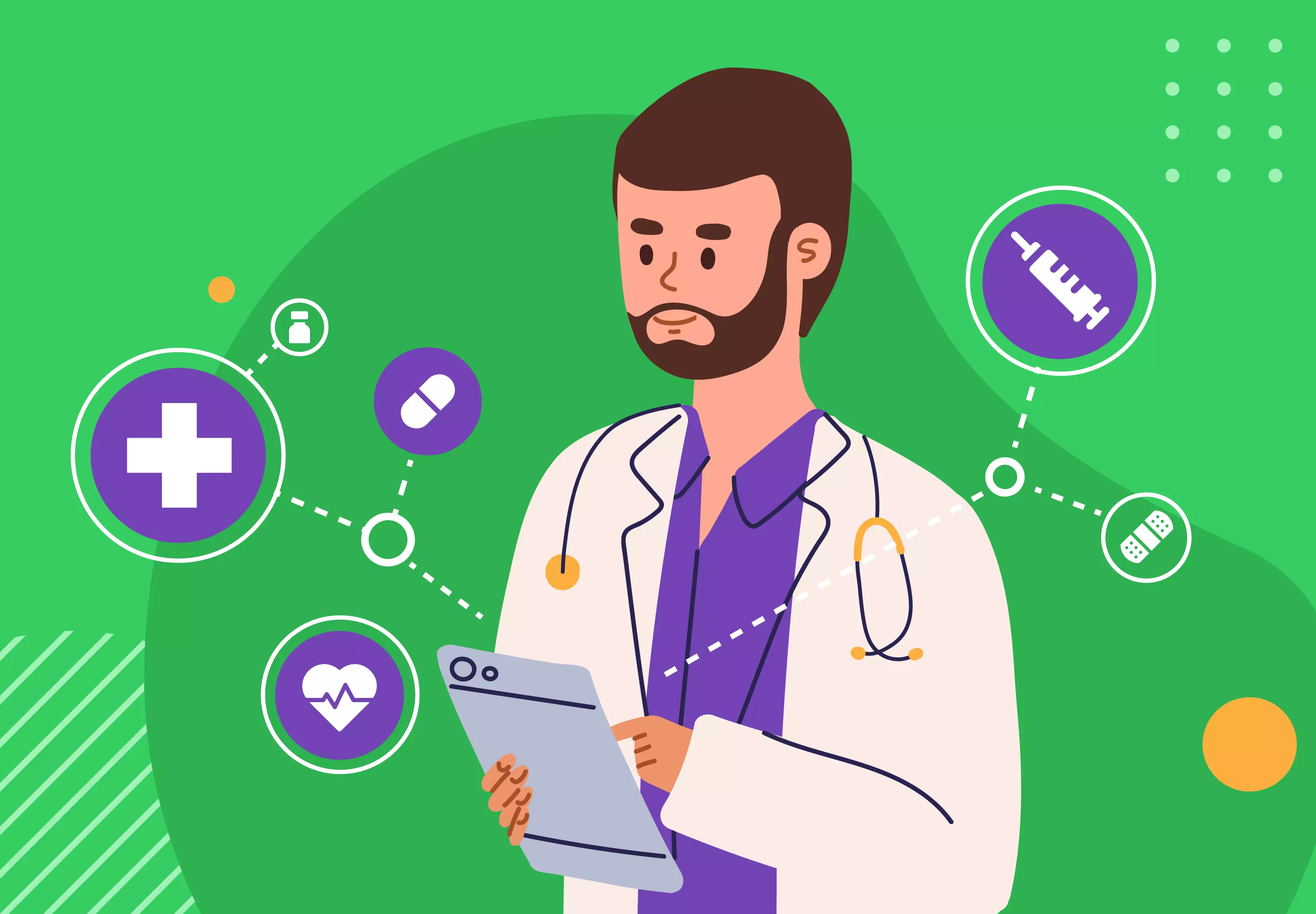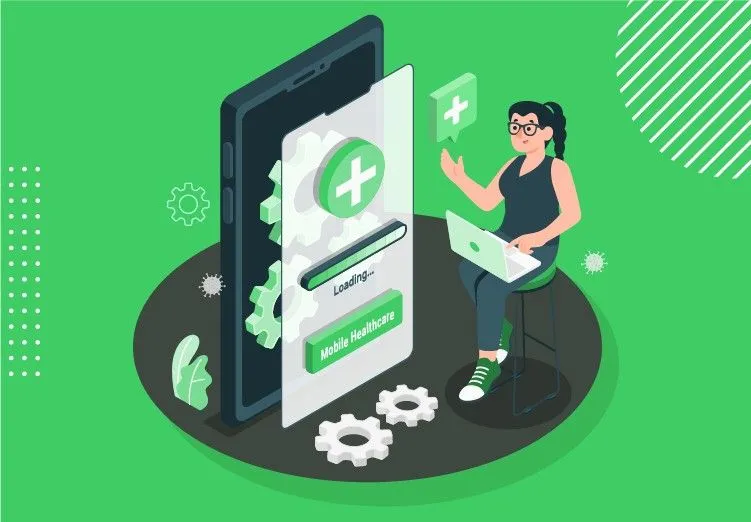Patient Portal Development: Types and Key Features
Table of contents
- What is a Patient Portal?
- Types of Patient Portals
- 1. General self-help portals
- 2. Remote monitoring patient portals
- 3. Telemedicine portals
- How Patient Portals Optimize Expenses for Healthcare Providers
- Key Features of Patient Portals
- Patient Registration and Authorisation
- Profile
- Medical Records Access
- Secure Messaging
- Appointment Scheduling
- Prescription Management
- Catalog of Services with a List of Doctors
- Appointment Scheduling
- AI Assistant
- Medical History
- Educational Articles
- ERX
- Payments
- Benefits of Patient Portals
- Conclusion
In today's digital era, patient portals have become an essential component of healthcare systems. With the aim of improving patient engagement and streamlining communication, patient portals provide individuals with secure online access to their medical information. In this comprehensive guide, we will explore the definition, features, and benefits of patient portals, shedding light on their significance in the healthcare landscape for 2023.
What is a Patient Portal?
A patient portal is a secure online platform that allows patients to access their personal health information, medical records, and other healthcare-related services. It serves as a centralized hub where patients can conveniently manage their health from the comfort of their homes.
Types of Patient Portals
Different types of patient portals can be developed based on specific needs and functionalities. There are three main types to consider:
1. General self-help portals
These web applications allow patients to schedule appointments, access their health data, and communicate with clinical staff through chat. Initially, these portals may have limited features, but they can be expanded over time by integrating new features and functionalities.
2. Remote monitoring patient portals
These portals have the same features as general patient portals but with an additional focus on remote monitoring. The primary function is to regularly send patient data to a clinic for monitoring by doctors. An example of this is an RPM (Remote Patient Monitoring) platform developed for a cardiology medical practice.
3. Telemedicine portals
These portals are similar to general self-help portals but with a key emphasis on video and audio calls. They enable patients to have virtual consultations with healthcare providers. To learn more about telemedicine app development, refer to the related resource mentioned.
It's important to note that when developing a patient portal, the software can be customized to meet specific requirements. The are possibilities flexible, and the software can be tailored to fit your business goals, just like assembling LEGO bricks.
How Patient Portals Optimize Expenses for Healthcare Providers
Enhanced Administrative Efficiency
Patient portals streamline administrative tasks by allowing patients to schedule appointments, complete registration forms, and update personal information online. This reduces the need for manual paperwork, minimizes administrative errors, and frees up valuable staff time. By automating these processes, healthcare providers can optimize their expenses by reducing administrative costs and reallocating resources to more critical areas.
Improved Communication and Engagement
Patient portals facilitate secure two-way communication between patients and healthcare providers. Patients can ask questions, request prescription refills, and receive test results, reducing the need for unnecessary phone calls or in-person visits. Improved communication not only enhances patient satisfaction but also allows healthcare providers to allocate resources more efficiently. By addressing patient concerns promptly and accurately, providers can avoid unnecessary follow-up visits and associated expenses.
Cost-effective Appointment Reminders
Missed appointments can result in lost revenue and wasted resources. Patient portals offer automated appointment reminders via email or SMS, reducing the likelihood of no-shows. By leveraging this feature, healthcare providers can optimize their expenses by minimizing missed appointments, maximizing appointment slots, and ensuring efficient utilization of staff and resources.
Efficient Access to Medical Records
Patient portals provide patients with secure access to their medical records, including test results, medication lists, and treatment plans. This empowers patients to actively participate in their care, reducing the need for repeated tests or consultations. By allowing patients to access and share their medical information easily, healthcare providers can optimize expenses associated with redundant tests and consultations.
Online Bill Payments
Patient portals often include features that allow patients to view and pay their medical bills online. By offering this convenient payment option, healthcare providers can reduce the administrative burden associated with billing and collections. Online bill payments also improve cash flow, minimize late payments, and reduce expenses related to manual billing and follow-up.
Key Features of Patient Portals
To create an engaging patient portal system, certain features must be included to maximize its effectiveness. These features are as follows:
Patient Registration and Authorisation
Healthcare organizations should allow existing and new customers to sign up for the patient portal independently. This can be done through a text message containing a link, where users can request a password and log in using their phone number. Two-factor and biometric authentication should be set up for added security. Additionally, users should be guided through the app during their initial login and be able to fill out necessary forms to minimize paperwork during clinic or hospital visits.
Profile
The profile section should contain essential information such as demographics, insurance details, emergency contacts, and basic medical information (conditions, allergies, medications, etc.). Integrating the patient portal with a CRM and EHR to pull data from these sources is advisable. Users should also have the option to share access to their health records with caregivers or family members.
Medical Records Access
Patient portals enable individuals to view and download their medical records, including lab results, diagnostic reports, and medication history. This feature allows patients to stay informed about their health status and facilitates a better understanding of their medical conditions.
Secure Messaging
Patient portals often include a secure messaging system that enables direct communication between patients and healthcare providers. Patients can ask questions, seek medical advice, request prescription refills, and receive timely responses, eliminating the need for phone calls or in-person visits.
Appointment Scheduling
Many patient portals offer the convenience of online appointment scheduling. Patients can view available time slots, book appointments, and receive automated reminders, reducing the chances of missed appointments and improving overall healthcare efficiency.
Prescription Management
Patients can request prescription renewals, view their current medications, and receive reminders for medication adherence through the patient portal. This feature promotes medication safety and enables patients to take an active role in managing their prescriptions.
Catalog of Services with a List of Doctors
Patients should have access to a comprehensive list of services provided by the healthcare facility and the available specialists. This section serves as the main dashboard, presenting all available options to customers.
Appointment Scheduling
This feature is crucial and often the primary reason for the existence of patient portals. Users should be able to schedule appointments even without access to the web portal or mobile apps. For instance, appointment scheduling can be done via text messages.
AI Assistant
An AI assistant, such as a chatbot or virtual helper, can answer questions and draw patients' attention to important aspects of health their. The possibilities for AI assistants are vast, as they can directly access medical data, making them valuable tools.
Medical History
The patient portal should include a health journal with charts that provide details of patients' health, including vaccinations, immunizations, lab results, clinical summaries, and other relevant information.
Educational Articles
The portal should offer self-help materials, including articles, video tutorials, and workouts. Providers should be able to share any relevant information with clients through the software.
ERX
Prescription refills and automatic repeat prescriptions should be available to patients, improving convenience.
Payments
The option for patients to make payments in advance for scheduled visits can help reduce no-shows. Online payment capabilities are essential in today's digital world.
It is important to ensure that the patient portal system complies with HIPAA regulations for the security and privacy of patient information.
Benefits of Patient Portals
1. Enhanced Patient Engagement: Patient portals empower individuals to actively participate in their healthcare journey. By providing access to their health information, patients can make informed decisions, set health goals, and actively communicate with their healthcare providers.
2. Improved Communication: Patient portals facilitate seamless communication between patients and healthcare providers. Patients can securely message their providers, seek clarifications, and receive prompt responses, leading to enhanced patient satisfaction and improved healthcare outcomes3.
3. Time and Cost Savings: Patient portals eliminate the need for unnecessary phone calls, paperwork, and in-person visits. Patients can conveniently access their health information, request prescription refills, and schedule appointments online, saving time and reducing healthcare costs.
Conclusion
Patient portals have transformed the way patients interact with healthcare providers and manage their health information. With features such as medical records access, secure messaging, appointment scheduling, and prescription management, patient portals promote patient engagement, streamline communication, and improve overall healthcare experiences. As we move into 2023, patient portals are expected to continue playing a pivotal role in empowering patients and fostering a patient-centered approach to healthcare.
Published on May 25, 2023





